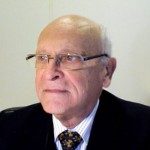Link to Pubmed [PMID] – 1692319
J. Biol. Chem. 1990 May;265(14):7987-93
Monoclonal antibodies directed against the native form of the beta 2 subunit of Escherichia coli tryptophan synthase strongly inhibit both its tryptophan synthase and its serine deaminase activities. The mechanism of this inactivation is studied here, by monitoring quantitatively the absorption and fluorescence properties of different well-characterized successive intermediates in the catalytic cycle of tryptophan synthase. It is shown that the antibodies interfere specifically with the formation of one or the other of these intermediates. It is concluded that the antibodies either modify or block the molecular flexibility of the protein, thus preventing conformational changes that the protein has to undergo during the catalysis. At least two different stages of the catalytic process, each one sensitive to a different class of antibodies, are shown to involve molecular movements of the polypeptide chain. Indications are given on the regions of the molecule involved in these movements.
